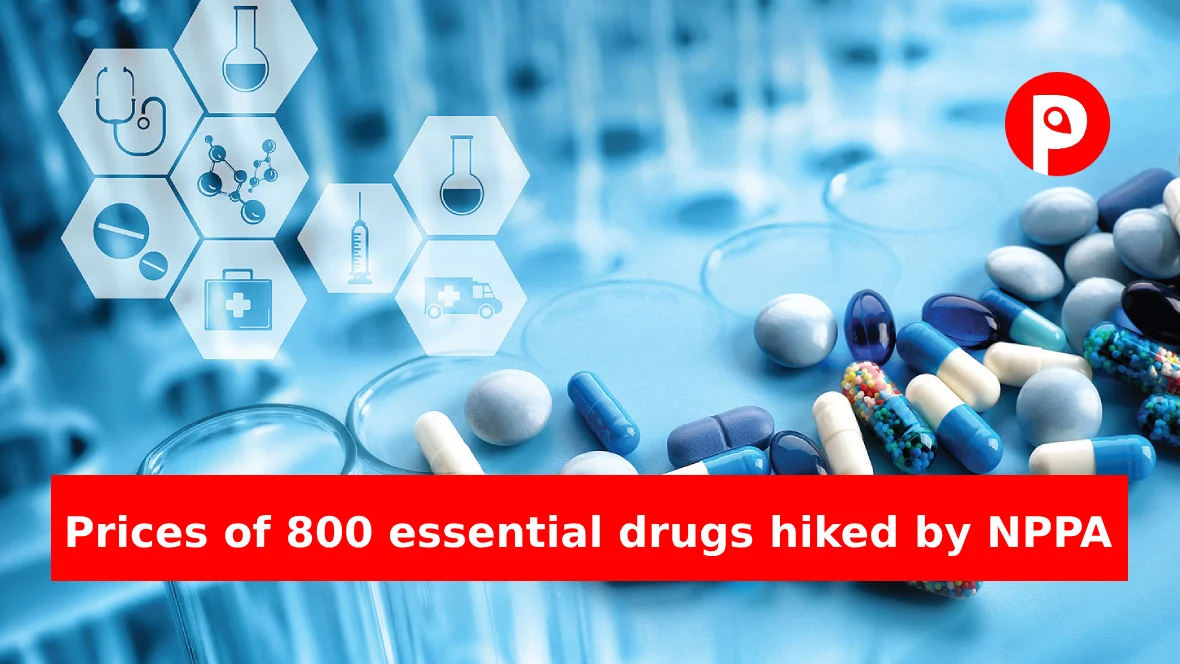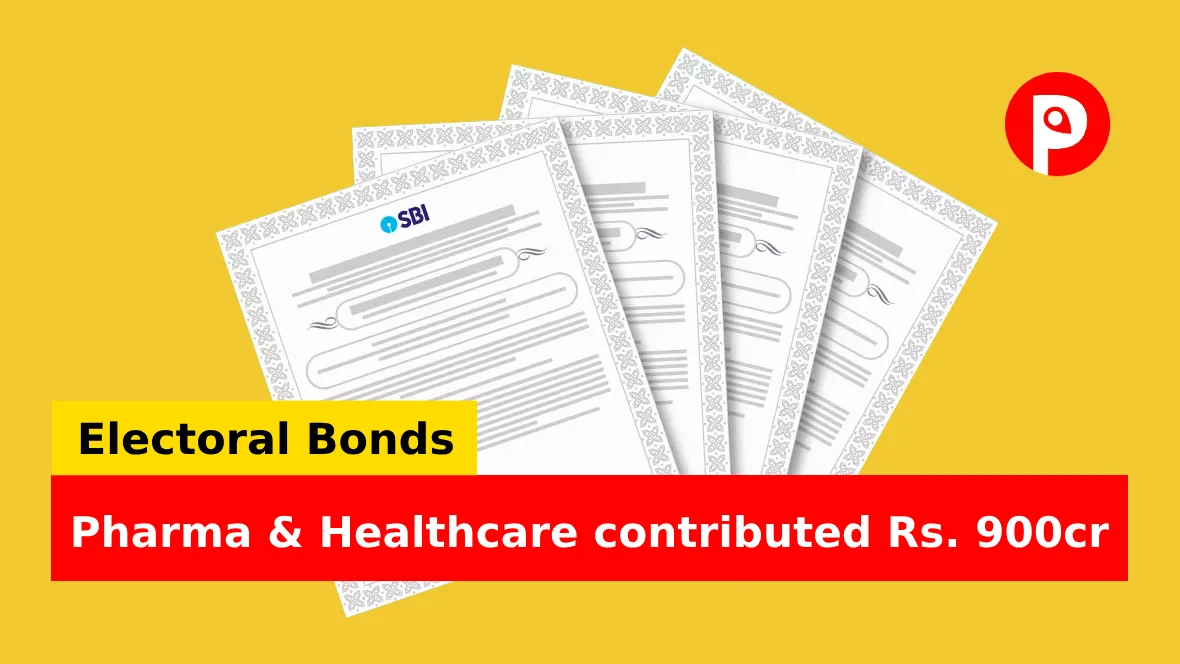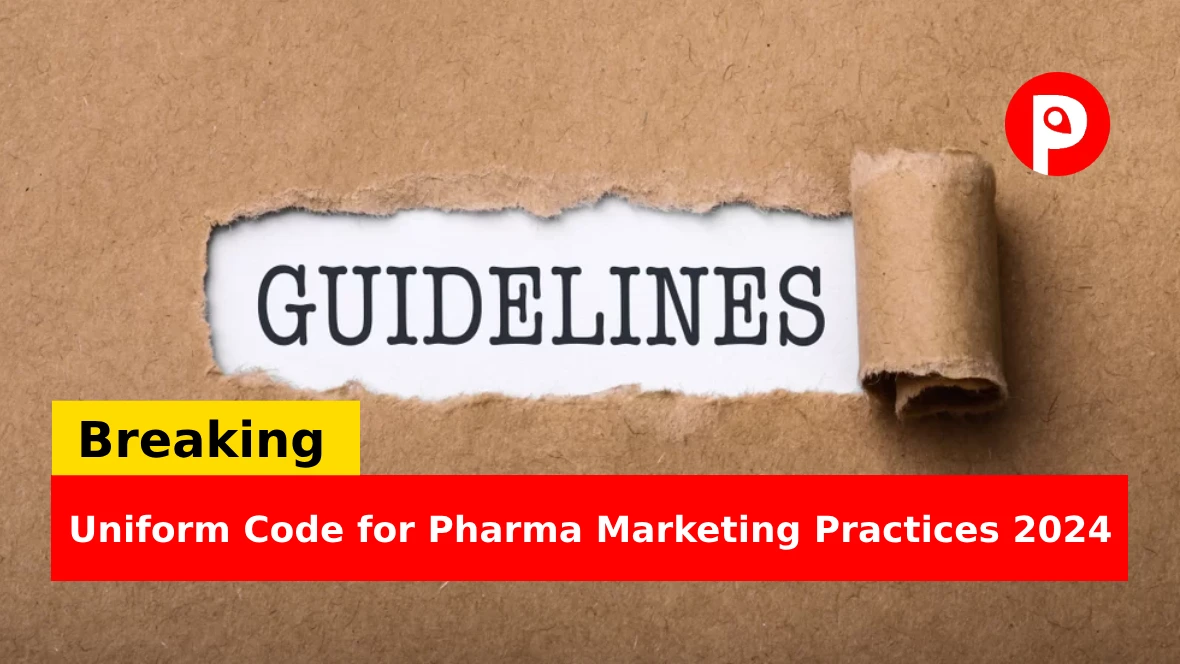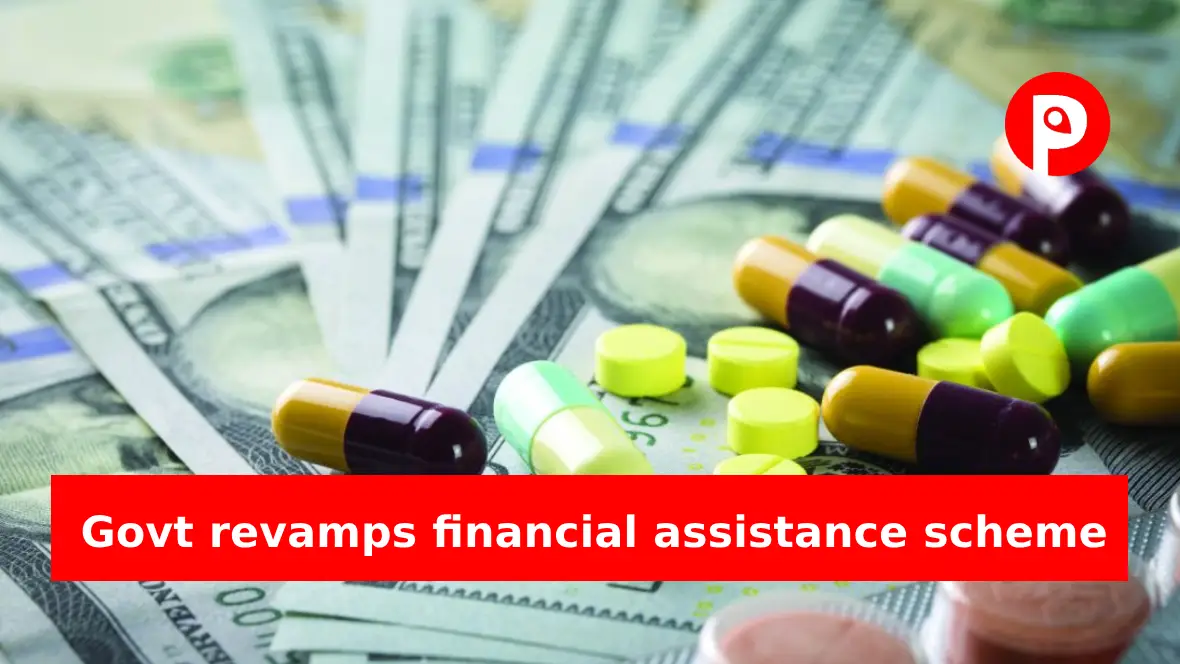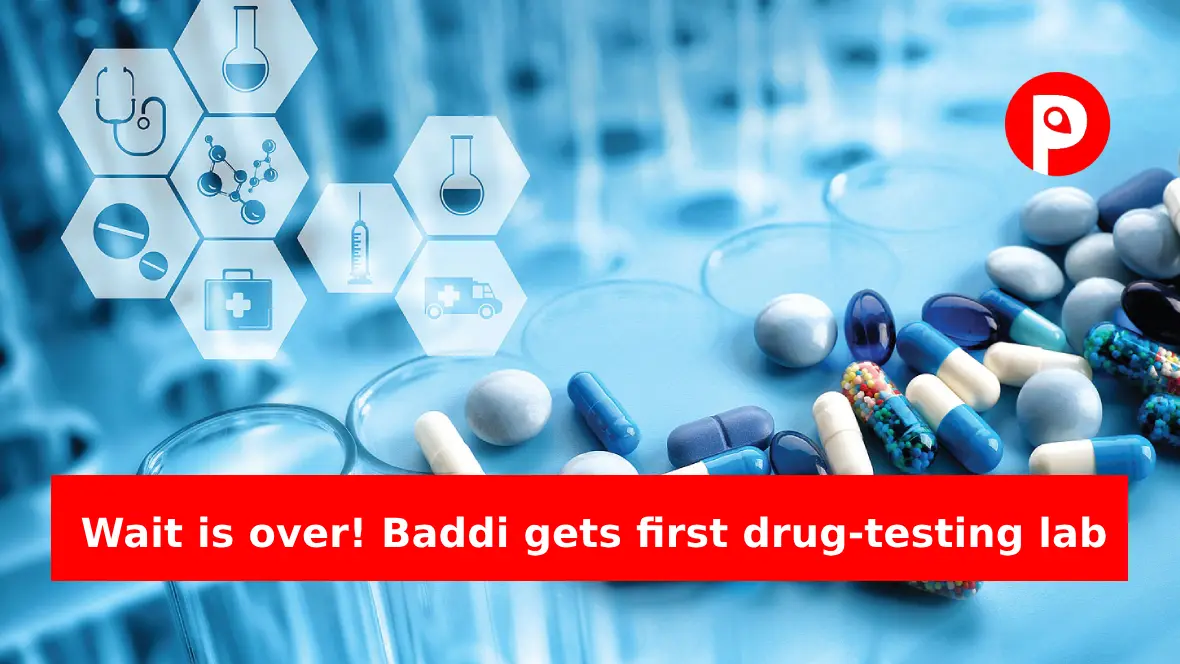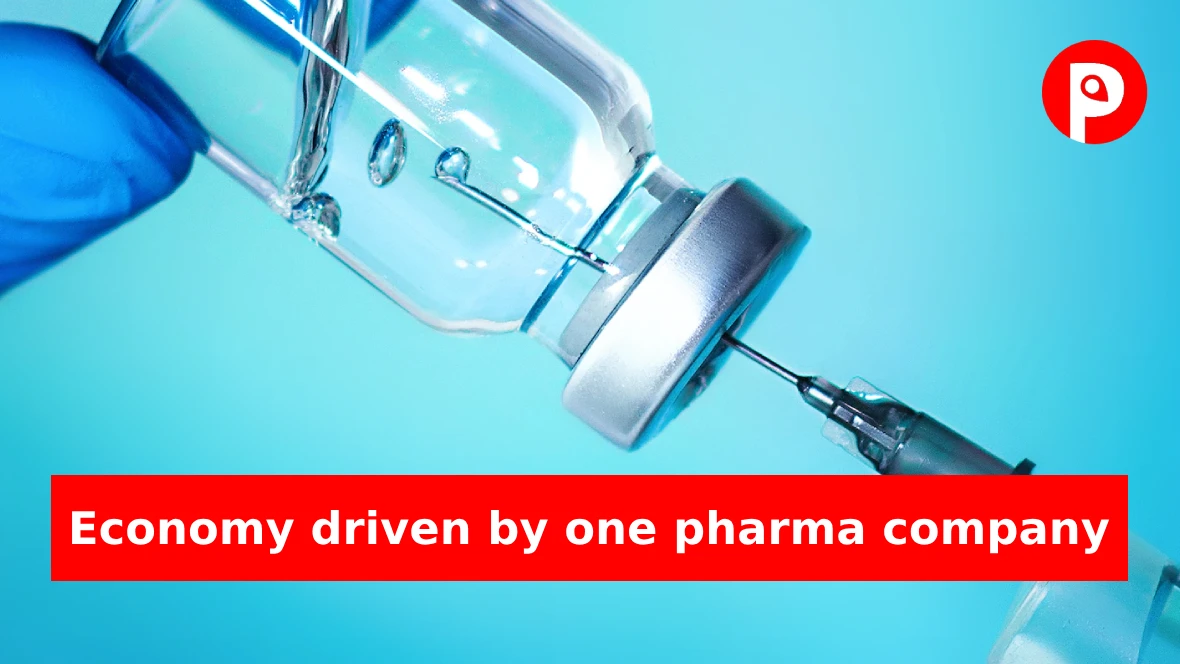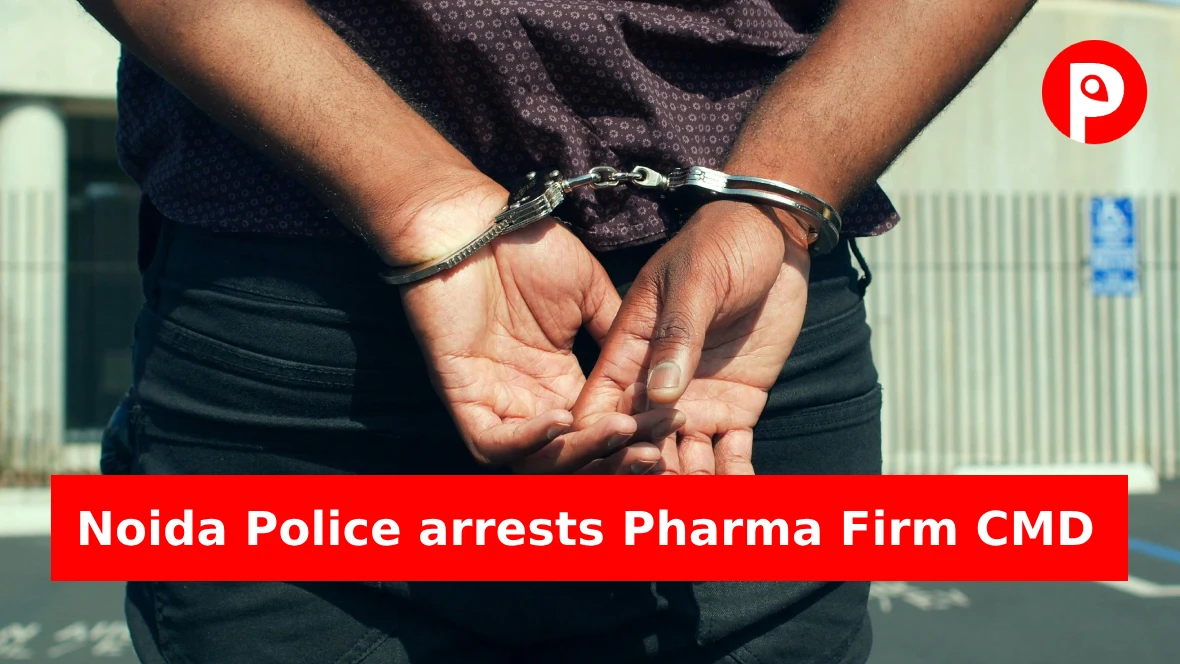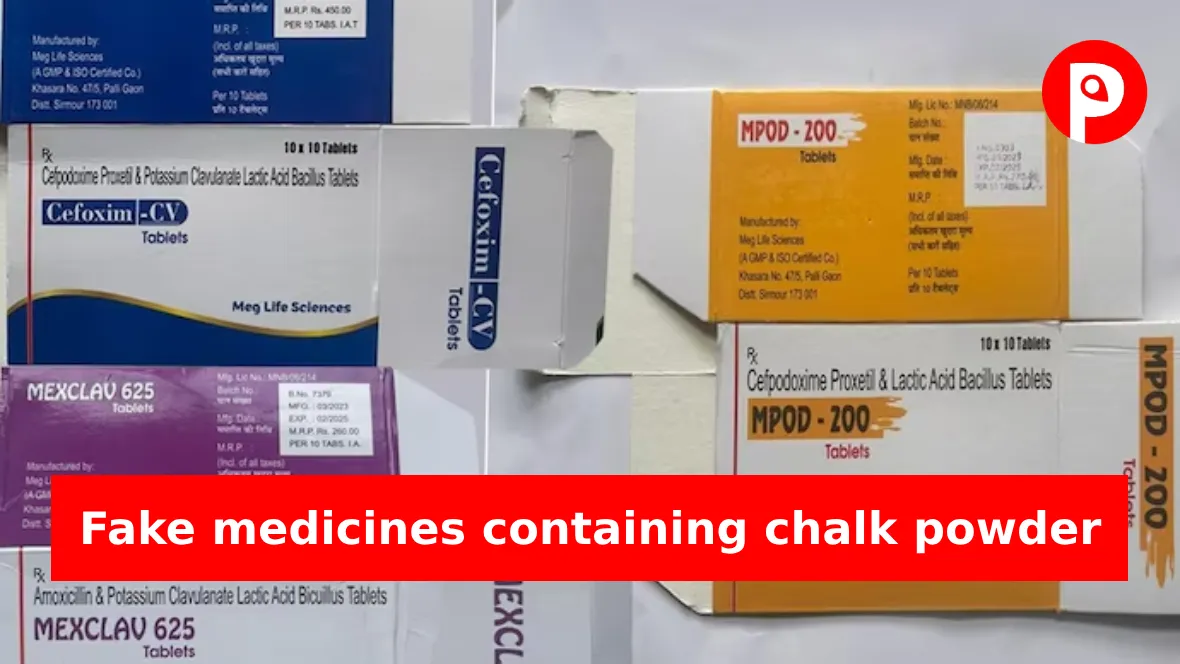Source: fiercepharma
Every year, we tap Evaluate’s annual preview report to assess the biggest potential new drugs of the year ahead. Typically, major pharmaceutical and biotechnology companies are featured, each presenting potential blockbuster launches.
In 2024, however, things are set to play out a little differently. The most anticipated drug comes from a biotech that many of us may have been unaware of, Karuna Therapeutics.
Its drug is not for traditionally well-known diseases like obesity or cancer; instead, it focuses on schizophrenia, a condition with few effective treatments and limited media attention.
That all changed when Bristol Myers Squibb snapped up the biotech in late 2023 for a major $14 billion, with the jewel in the crown of that deal being KarXT, a new type of drug to treat schizophrenia.
Evaluate, which estimates sales for each drug by 2028, projects $2.8 billion in sales for this particular drug, making it the highest estimate among its top 10 most anticipated drug approvals for the year.
If you’ve been following Evaluate’s annual preview reports over the past two years, you’ll find a familiar drug in number two in the form of Eli Lilly’s Alzheimer’s hopeful donanemab. This drug has had a long and tortuous path toward a potential approval, and Evaluate’s estimates for its sales potential have continually been revised downwards. Lilly will hope 2024 will be its year.
The third most anticipated drug launch comes from another small biotech, Madrigal Pharmaceuticals, and its non-alcoholic fatty liver drug, resmetirom. Treating this condition, typically caused by obesity and capable of leading to liver disease and failure, has long been predicted to be a major source of revenue for the biopharma industry. However, numerous trial failures and weak results over the past five years have revealed the disease to be a much more challenging adversary for drug development.
Madrigal will hope its THR-β agonist drug will prove the be the breakout drug NASH needs and success where so many others have failed.
Just as last year, this preview comes with caution over sales estimates; not on the estimates themselves, but a more conservative forecasting given just how tricky translating research into a regulatory approval has become in recent years.
This is reflected in the overall total potential sales by 2028 for all the top 10 drugs, which, for 2024, amount to just $15.2 billion. This marks a decline from 2023’s already low overall total of $17.5 billion.
Both figures are a huge drop from 2022 when the sales potential for the top 10 drugs from the list came in at a much meatier $26.9 billion. In two years, we’ve dropped more than $11 billion in sales potential as caution over new drug launches becomes a hardened trend.
The top 10 list is based on Evaluate’s 2024 preview, where the analysts assess what they see as the biggest-selling drugs that will be approved this year in terms of sales by 2028.
Check out the top 10 most anticipated drug launches of the year below.
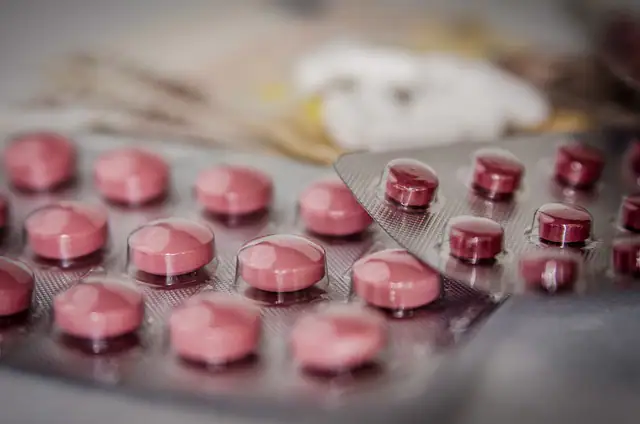
Celebrating February as
Pharma Formulations Month
Promotions, Branding, & Marketing opportunities

1. KarXT
By Ben Adams
Drug: KarXT
Company: Karuna Therapeutics
Used for: Schizophrenia
Est. 2028 sales: $2.8 billion
You’d be forgiven for scratching your head at what Evaluate believes will be the biggest drug launch of 2024, in terms of sales potential by 2028, and at its maker Karuna Therapeutics.
Karuna has been a little-known biotech and not the major pharma company we’ve come to expect to top these lists, and the leading med isn’t for cancer or a rare disease, but schizophrenia, a condition not typically associated with blockbuster sales.
The world however became well-acquainted with Karuna in late 2023, when acquisitive Big Pharma Bristol Myers Squibb handed over $14 billion to buy out the neurology biotech.
That deal, and Evaluate’s predicted biggest-selling drug to be launched this year, centers on KarTX, a first-in-class M1 / M4 muscarinic receptor agonist that is seeking an approval in schizophrenia.
This condition, like most neurological conditions, is underserved in terms of available treatments on the market, as it remains a severe but typically rare disease. Drugs for the condition, such as Rexulti from Lundbeck and Otsuka, seek bigger sales from other conditions, including severe forms of depression or Alzheimer’s agitation while a host of older generics saturate the schizophrenia market.
Karuna, however, believes it has two distinct advantages in this market that come from its drug’s efficacy and its safety profile. Karuna filed for approval for the drug in September 2023 with data from three placebo-controlled studies—two phase 3s and one phase 2. The company also has long-term extension trials ongoing.
The biotech passed the primary endpoints in all three completed trials, with the first of the two phase 3 readouts coming back in August 2022 showing that treated patients had a nearly 10-point drop on the Positive and Negative Syndrome Scale for Schizophrenia, a measure of severity for the condition.
The readout of the second phase 3 trial last year found that the drug induced an 8.4-point reduction on the scale compared to placebo at week 5.
Another key selling point for Karuna is its clinical performance, coupled with the absence of side effects that have plagued existing schizophrenia treatments, such as drowsiness and weight gain. Strong efficacy with minimal side effects represents a significant win-win in this market.
That market potential recently attracted Royalty Pharma, which coughed up $100 million to PureTech, owner of a Karuna, for a slice of future sales. Royalty stands to make 3% on the first $2 billion in sales and then a third of what’s made after that. It also then of course attracted the $14 billion buyout from BMS.
Karuna is already looking to enlarge KarXT’s use, with ongoing trials testing it as a treatment for psychosis in Alzheimer’s patients and as an adjunctive treatment with another psychosis med, among other uses.
Its PDUFA is Sept. 25, 2024, at which point it will be Bristol Myers’ responsibility to launch and make good on the $2.8 billion Evaluate sees at its sales potential by 2028.

2. Donanemab
By Ben Adams
Drug: Donanemab
Company: Eli Lilly
Used for: Alzheimer’s disease
Est. 2028 sales: $2.2 billion
It’s a case of déjà vu for Eli Lilly’s donanemab given that this drug has been anticipated to launch for the past two years.
The experimental Alzheimer’s disease drug comes as the second most anticipated drug launch for this year after being fourth on Evaluate’s most anticipated 2023 launches, where the tea leaves said it could see $1.9 billion in sales by 2028.
In 2022, it topped the most anticipated list with an estimated $6 billion in sales by 2026. Now, Evaluate is seeing $2.2 billion in sales by 2028.
It keeps finding its way into the lists because of Lilly’s tricky path to a potential approval over the past three years, which culminated in January 2023 with an FDA rejection of its med over trial patient numbers.
But Lilly powered on, re-filed with the FDA in the summer of last year and is set for a decision from the FDA in the first quarter of 2024. The estimates have also varied wildly; the early optimism of 2022, a $6 billion haul, has now been massively downgraded to this year’s $2.2 billion.
That’s largely down to the impact of Biogen’s Aduhelm, an Alzheimer’s disease drug that launched a few years back but imploded spectacularly, failing to make any money and then culled from the market amid pricing, safety and efficacy woes.
That dose of reality saw a re-alignment of the Alzheimer’s disease market’s potential, though there have been more positives since the Aduhelm debacle.
If approved, Lilly will have to compete with Eisai and Biogen’s much-heralded Alzheimer’s disease treatment, Leqembi. This drug topped Evaluate’s list of most anticipated drug launches in 2023 (expected to make $3 billion by 2028) and received FDA approval a year ago.
This drug, much more welcomed than Aduhelm, has helped restore confidence in the Alzheimer’s disease market, and the sales potential of newer meds.
Lilly already has hopes it can make up for its later entry into the Alzheimer’s disease market. Back in May 2023, donanemab achieved a 35% slowing of cognitive decline and a 39% lower risk of advancing to the next stage of the disease, when compared to placebo.
Compare this to Leqembi, which, in its data posted a few years ago, demonstrated a 27% reduction in cognitive decline compared to a placebo. There are key differences between the studies, and the normal warning around making direct comparisons remains—but Lilly said last year amid the data that donanemab has set a new standard.
There is however one major caveat: No matter how you slice the data, donanemab had a higher rate of a known side effect of the amyloid-lowering monoclonal antibody class called ARIA than was reported with Leqembi.

3. Resmetiron
By Ben Adams
Drug: Resmetirom
Company: Madrigal Pharmaceuticals
Used for: Nonalcoholic steatohepatitis
Est. 2028 sales: $2.1 billion
Madrigal Pharmaceuticals is hoping to succeed where so many Big Pharmas and biotechs, from Gilead to Intercept Pharmaceuticals, have failed: to bring a safe, effective drug to treat nonalcoholic steatohepatitis (NASH).
This condition, which can go undetected for many years with little to no symptoms, is caused by a build-up of fat in the liver and is typically associated with obesity and type 2 diabetes.
Absolute numbers on prevalence in the U.S. are hard to pin down, but the NIH estimates it could be as high as 6.5% of the total adult population of the U.S.
That’s a lot of people who could be suffering from a stealthy disease that, in a minority of cases, can go on to cause severe liver damage through fibrosis (scarring) and more seriously cirrhosis. The condition has become the leading cause of liver transplants.
Diet and exercise can help cut liver fat but, pharma being pharma, it sees the sales opportunity to drug its way out of the problem.
There has been scores of trials from dozens of biopharmas over the past five years using differing mechanisms of action to try and cut liver fat in NASH patients to reduce the risk of liver scarring and damage.
Almost all of them, however, have flopped or data have proven too weak to be meaningful. While analysts have seen a mega-blockbuster market opportunity for NASH, drugging the problem has proven much harder than the industry had hoped for, and we still do not have an approved NASH treatment on the market.
Madrigal Pharmaceuticals hopes to change all that on March 14 with its FDA priority review for resmetirom. The drug, which works as a THR-β agonist, saw a positive phase 3 readout in December 2022.
In that study, 26% of patients on the 80 mg dose and 30% on 100 mg, respectively, achieved the primary endpoint of a reduction in the NASH activity score—which includes ballooning and inflammation—of two or more points as well as no worsening of fibrosis.
Evaluate sees Madrigal as making $2.1 billion in sales by 2028 for its drug and comes on the heels of a renaissance in NASH research, which has steadily this past year seen increasingly more trial wins, and a return to confidence in the nascent market.
But there is a cautionary tale in the form of Intercept Pharmaceuticals and its drug Ocaliva. Intercept first got approval for this drug back in 2016 for a rare liver disease causes primary biliary cholangitis (PBC). That was supposed to be the opening act for its entry into NASH, but its tortured regulatory and research path, littered with trial flops and FDA rejections, finally saw Intercept give up, selling itself off and give up on NASH.
Madrigal will hope to have better luck.

4. Sotatercept
By Ben Adams
Drug: Sotatercept
Company: Merck & Co.
Used for: Pulmonary arterial hypertension
Est. 2028 sales: $2 billion
It’s another case of déjà vu for 2024 as Merck & Co.’s experimental pulmonary arterial hypertension (PAH) drug sotatercept is, just like Lilly’s donanemab, once again on Evaluate’s list.
It came in 10th in 2023, with projected sales of $1 billion by 2028, but the drug was not approved last year. Its PDUFA, under a priority review, is now March 26 this year, and Evaluate has doubled its estimates for the drug to a cool $2 billion by 2028.
That will be welcome news for Merck given that the drug was the jewel of its $11.5 billion Acceleron Pharma buyout.
The excitement around sotatercept centers on the fact that it works differently to the currently marketed drugs for PAH, which are vasodilators that open the blood vessels.
As an activin receptor type IIA-Fc fusion protein, it acts more directly on the underlying “problem proteins” that cause the disease in the first place.
If approved, it would be a first-in-class treatment for the condition, and Merck hopes this will give it an edge over other PAH drugs, such as Johnson & Johnson’s Uptravi and Opsumit. And it’s an important one: PAH is a form of high blood pressure in the lungs that can get worse over time and can without treatment prove life-threatening.
Merck already has some experience here, given that it first entered the PAH space in 2014 through a licensing deal with Bayer on first-in-class sGC modulator Adempas.
Sotatercept will also prove important for Merck as it looks to wean itself off the mega-blockbuster sales being brought in by its cancer behemoth Keytruda. This drug, which has multiple oncology licenses on its own or with other drugs, made more than $18 billion in 2022. However, the drug is now a decade on from its first FDA approval, and inevitably, thoughts are turning to its post-patent life. Merck has long been under investor pressure to reduce its reliance on Keytruda, even as the PD-1 inhibitor expands its lead across a range of cancer types.
According to SVB Leerink analyst Daina Graybosch, Ph.D., writing in a note to clients when Merck announced the deal to snap up Acceleron, about half of Merck’s 2026 sales will come from Keytruda, but that percentage would drop to 48% if sotatercept successfully launches this year.

5. Datopotamab deruxtecan
By Ben Adams
Drug: Datopotamab deruxtecan
Companies: Daiichi Sankyo/AstraZeneca
Used for: Lung and breast cancers
Est. 2028 sales: $1.8 billion
AstraZeneca and Daiichi Sankyo are betting big on datopotamab deruxtecan (Dato-DXd), their experimental cancer treatment that works as an antibody-drug conjugate (ADC), a hot area in oncology research right now.
Dato-DXd is the next-gen ADC from the production line that delivered Enhertu, its first-gen ADC drug that has FDA approvals in certain breast and lung cancers.
AZ and Daiichi, which tied up research on these ADCs several years back in a deal worth billions of dollars, are hoping for an Enhertu 2.0 as they gun once again for licenses in non-small lung cancer (NSCLC) and breast cancers with Dato-DXd.
Both companies are expecting to file for FDA approval soon in these settings with an expected launch later this year (though this could push into 2025). The path to a potential approval has been rocky, however, when patient deaths in a lung cancer trial of the drug raised questions over safety.
AZ and Daiichi told Fierce Biotech in October that despite these deaths, which occurred as a result of damaged lungs, the benefit-risk profile “still seems to tip towards Dato-DXd,” particularly in patients with non-squamous non-small cell lung cancer.
The pair have since released new data showing the drug boosted progression-free survival in HR-positive, HER2-low or negative breast cancer, as the drug looks to take on Gilead’s Trodelvy, which already has a license in that disease group.
Analysts at GlobalData expect Daiichi Sankyo to dominate the increasingly competitive ADC space through 2029.
While Enhertu is the bedrock of the forecast, Dato-DXd is also tipped to contribute to sales, which GlobalData sees as topping $10 billion in total by 2029.
The forecast paints Daiichi as the runaway leader in the market, with Seagen and Roche following as distant second and third, respectively. GlobalData predicts that sales of their ADCs will reach $5.8 billion and $3.6 billion, respectively.
Evaluate, meanwhile, see $1.8 billion in sales by 2028 from Dato-DXd, should it launch this year. It likely won’t reach the heights of Enhertu, however, which made $1.6 billion in 2022 after its first approval in 2019, with sales expected to jump to $2.3 billion in 2023.

6. Acoramidis
Drug: Acoramidis
Company: BridgeBio Pharma
Used for: ATTR cardiomyopathy
Est. 2028 sales: $1 billion
BridgeBio Pharma is preparing to try to prise Pfizer’s fingers off a heart disease market. With phase 3 data linking BridgeBio’s acoramidis to drops in cardiovascular-related death and hospitalization, analysts are tipping the biotech to carve out a piece of the market and generate blockbuster sales.
The molecule, a TTR stabilizer, is under review at the FDA. BridgeBio filed for approval late last year after a transformational 2023, in which pivotal data on acoramidis in the heart disease transthyretin amyloid cardiomyopathy (ATTR-CM) helped to drive its share price up more than 400%. BridgeBio linked the drug candidate to a 30% drop in cardiovascular-related deaths compared to placebo in its phase 3 trial.
Analysts expect Pfizer’s incumbent ATTR-CM drug tafamidis, sold as Vyndaqel and Vyndamax, to hold on to around two-thirds of the market over the coming years. That forecast reflects a view that tafamidis is now “quite entrenched” and “might be difficult to displace.”
Even so, the size of the ATTR-CM market and speed of its growth mean a second-placed player could still create a prosperous product. Sales of Pfizer’s tafamidis increased (PDF) 34% to $2.4 billion over the first nine months of 2023. BridgeBio took pole position to challenge Pfizer after Alnylam dropped plans to expand use of Onpattro, although the RNAi specialist is nearing phase 3 ATTR-CM data on another drug.
BridgeBio’s market research studies, which envisaged four approved medicines competing for share, “pretty reliably” foresaw a 25% to 40% stake for acoramidis, CEO Neil Kumar said at the J.P. Morgan Healthcare Conference in January. Bigger companies with a stronger commercial history, namely Pfizer and Alnylam, have their own plans but Kumar is bullish about BridgeBio’s prospects.
The confidence reflects Kumar’s view that his asset is “far and away the best reducer of toxic monomer” and an assessment of the scale needed to serve the ATTR-CM market. There are 36,000 cardiovascular practices but “100 or so centers of excellence” and “1,100 or so heart failure specialty clinics” are driving growth of the market, Kumar said, giving BridgeBio a more manageable subset to go after.
“We know precisely who is prescribing, we know where they’re prescribing. It turns out to be a relatively constrained environment within which we feel like we can commercialize effectively,” Kumar said. “It’s increasingly solvable when one considers the fact that we have a team that has a lot of CV experience, that has deep relationships with these centers of excellence.”
BridgeBio also plans to learn lessons from tafamidis. “Physicians’ prescription initially of this high-cost drug, coupled with patients’ ability to comply with the drug given current financial toxicity, is a key pain point. We will be focused there, to try to alleviate as much of that pain as possible,” Kumar said.
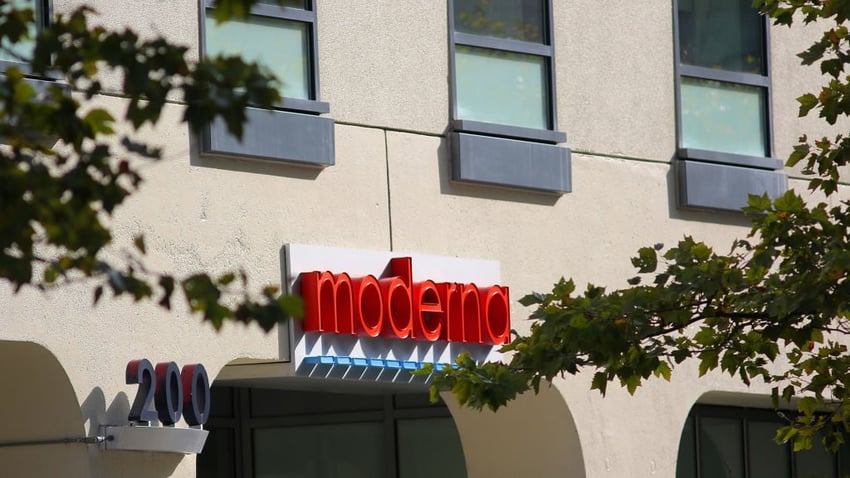
7. mRNA-1345
Drug: mRNA-1345
Company: Moderna
Used for: RSV vaccine
Est. 2028 sales: $913 million
Moderna is set to make the adult respiratory syncytial virus (RSV) vaccine market a three-horse race. Hot on the heels of GSK and Pfizer, the mRNA specialist expects to win approvals in adults aged 60 years and up in the first half of the year, positioning it to compete for market share in the 2024-25 RSV season.
GSK and Pfizer won FDA approval for Arexvy and Abrysvo, respectively, last year—and quickly validated the hypothesis that RSV vaccination is a major opportunity. Arexvy flew out of the traps, generating 709 million pounds ($900 million) in the third quarter on its way to a full-year forecast that tops out at 1 billion pounds. Abrysvo made a slower but still healthy start, bringing in $375 million in the third quarter.
Arexvy and Abrysvo have only scratched the surface of the opportunity, with GSK forecasting peak sales of at least 3 billion pounds, and Moderna is set to join the party just one RSV season late. Even so, the biotech, which has so far only commercialized its COVID-19 shot Spikevax, faces the challenge of going up against two experienced vaccine manufacturers that have a year head start.
James Mock, chief financial officer at Moderna, discussed how the company will approach the challenge and why it is confident it can make a dent in the market at the J.P. Morgan Healthcare Conference in January.
“We’re really excited about the product profile. We love the efficacy. We think it benchmarks well. The safety and tolerability is terrific, as well as the ease of use. The fact that it is a prefilled syringe versus our competition we think matters from a productivity perspective in all the retail pharmacies and in doctors’ offices,” Mock said.
Asked about how Moderna plans to compete in RSV, Mock expanded on those points, voicing the view that mRNA-1345 has “best-in-class or thereabouts efficacy” and explaining that the company is yet to see cases of Guillain-Barré syndrome, an adverse event linked to rival vaccines, after dosing 37,000 people.
“Then you look at, ‘okay, well, how did we compete in 2023 in COVID?’ It’s going to have to be similar, particularly in the U.S. Now we’re bringing a second product through that same channel to actually help expand our share in that market overall,” Mock said.
Moderna will need to take a different approach internationally. Countries such as the U.K. are sourcing RSV vaccines through tender processes. Moderna is looking at the timing of the processes and potential regulatory approvals to inform its decision about the order of its international rollout.
“We won’t be able to make every single country all the time. It takes a lot of resources. It will take some time to get through all the global approvals. But we’re prioritizing those to make sure that we look at the size of the market, when is the tender process, and roll out our regulatory approvals as best as we can,” the CFO said.

8. Anktiva
By Nick Paul
Drug: Anktiva
Company: ImmunityBio
Used for: Nonmuscle invasive bladder cancer
Est. 2028 sales: $878 million
ImmunityBio could be forgiven for being unhappy to be on this list. The biotech was on course to be part of the drug launch class of 2023, when a higher bar kept Anktiva out of the top 10 prospects, only for the FDA to find deficiencies during a pre-license inspection. Now, ImmunityBio is taking a second run at the agency.
The FDA review, which is set to reach a conclusion by April 23, is looking at the IL-15 superagonist fusion protein Anktiva. ImmunityBio studied the candidate in combination with the immunotherapy drug BCG in patients with nonmuscle invasive bladder cancer (NMIBC) to support its filing for FDA approval.
Seventy-one percent of the patients, who were unresponsive to BCG as a monotherapy, had a complete response after receiving the combination. The delay caused by the FDA rejection allowed ImmunityBio to add updated data to its resubmission. After more than 28 months of follow-up, the trial was yet to reach the median duration of a complete response. The probability of a response lasting two years was 60%.
Durability is central to ImmunityBio’s pitch for a market that is already served by Merck & Co.’s Keytruda and Ferring Pharmaceuticals’ Adstiladrin. Keytruda won approval with a median duration of response of 16.2 months. For Adstiladrin, the figure was 9.7 months. Bobby Reddy, M.D., ImmunityBio’s chief medical officer, outlined what a longer response would mean for patients at an investor event in November.
“This is BCG unresponsive. You’ve already experienced one relapse, and the next step is to lose your bladder,” Reddy said. “There’s a risk that you could progress into invasive disease or more significant metastatic disease. It’s really important at that point in time to find something that can work effectively. We have a higher response rate than these other competitors … and a longer duration of response.”
ImmunityBio plans to bring Anktiva to market itself and, having seen its cash dwindle to $43.5 million at the end of June, spent the back half of 2023 and start of 2024 firming up its financial position. Founder Patrick Soon-Shiong, M.D., provided funding in September, adding to the money he has pumped into a biotech that had an accumulated deficit of $2.7 billion by the end of that month. More cash arrived in January.
The money is supporting ImmunityBio’s ambition to hit the ground running if it wins approval. Talking at the investor event in November, ImmunityBio CEO Rich Adcock said the company plans to “have product in the field right away” if the FDA signs off. The biotech has also laid the groundwork for market access, talking to payers and figuring out internally what price it will charge.
BCG availability is a potential threat to the plan. Increased demand has caused a shortage of the drug, which is used in combination with Anktiva. Yet, Adcock, while saying “it’s definitely a real issue,” believes the situation is under control.
“We’ve heard consistently from urologists for several years that, because they’ve been experiencing this for five, six, seven years now, they’ve learned to manage it themselves,” Adcock said. “They have created supply systems where these large urology group practices, these large organizations can share between individual offices and schedule patients in a way that they can manage this problem.”

9. Ensifentrine
Drug: Ensifentrine
Company: Verona Pharma
Used for: Maintenance of chronic COPD
Est. 2028 sales: $784 million
Verona Pharma is on the cusp of adding a posthumous approval to the storied career of the late Sir David Jack. More than a decade on from the death of the former Glaxo R&D chief, Verona is months away from a decision that could see ensifentrine join Ventolin and the first billion-dollar drug on the list of approved products linked to Jack (PDF).
The fact that Jack, who began his career in 1951, co-invented ensifentrine gives some idea of how protracted the drug development process has been. Vernalis filed for a patent based on Jack’s work in 2000 and sold the intellectual property to Rhinopharma in 2005. The next year, Rhinopharma became Verona Pharma.
Stability hindered early efforts to develop the dual PDE3 and PDE4 inhibitor, leading Verona to create a nebulized formulation that entered the clinic in 2014. Since then, the British biotech has trialed the drug candidate in asthma, COVID-19, cystic fibrosis and chronic obstructive pulmonary disease (COPD).
The breakthrough arrived in 2022 when Verona shared data from phase 3 trials that linked ensifentrine to improvements in lung function and reductions in exacerbations when used as a maintenance therapy in chronic COPD. The trials met their primary and key secondary endpoints and supported Verona’s filing for FDA approval.
With the FDA set to rule on the filing in June, Verona is gearing up to bring the molecule to market. The biotech is pitching ensifentrine, which has bronchodilator and anti-inflammatory effects, as the first new mechanism of action in COPD in years. Verona’s belief in the need for a new mechanism is built on studies that suggest at least half of the 8.6 million maintenance therapy patients remain symptomatic.
Christopher Martin, chief commercial officer at Verona, quoted the statistic in a presentation at the J.P. Morgan Healthcare Conference in January. Verona sees ensifentrine as an add-on for patients regardless of their maintenance therapy but expects penetration to be highest—23% to 49%—in the 2.6 million people who take a LABA/LAMA cocktail or LABA/LAMA/ICS triple therapy because of the unmet need.
The millions of COPD patients are treated by around 400,000 providers, Martin said. That is a big number for a company of Verona’s size to cover but, if Martin is right, it will only need to directly target a fraction of those providers. An analysis of the COPD drugs Trelegy, Brextri and Yupelri suggests a smaller group of providers accounts for most prescriptions.
“When you look at that you realize that a company like Verona can take a very targeted approach and reach the opportunity in a very systematic approach with our reps that we’ll put in the field,” Martin said. “There’s only about 3,000 doctors that see 150 patients a month. That’s a small group of doctors seeing a lot of patients.”
Verona plans to focus personal promotions on those 3,000 busy physicians, plus a second tier of 12,000 people who are responsible for 45 claims a month. Reps will use telesales to cover a third group and only cover the fourth tier of around 370,000, low-prescribing healthcare professionals through omnichannel promotions.

10. Imetelstat
Drug: Imetelstat
Company: Geron
Used for: Lower-risk myelodysplastic syndromes
Est. 2028 sales: $737 million
After more than 30 years of work, Geron is less than six months from a potential landmark approval. The drug candidate, imetelstat, is on the cusp of becoming the first telomerase inhibitor to be authorized in the U.S.
Geron set up shop in 1990 and went public in 1996. Back then, the biotech’s work informed headlines such as “Could immortality be within grasp? Scientists say yes” but hype about the anti-aging potential of telomerase inhibitors was later swamped by costly setbacks. At the end of 2022, Geron’s accumulated deficit stood at $1.4 billion.
The money has supported a 20-year odyssey. Geron began a phase 1 trial of imetelstat, then known as GRN163L, in 2005. A laundry list of clinical trials failed to find a place for the molecule. Geron stopped a phase 2 breast cancer trial in 2012, halted work on solid tumors with short telomeres in 2013, was hit by a clinical hold in 2014, failed an interim analysis in 2016 and lost its Johnson & Johnson deal in 2018.
As the setbacks mounted up, Geron continued to look for a setting where imetelstat could make a mark. The 2017 decision to expand a phase 2 trial to include patients with lower-risk myelodysplastic syndrome (MDS) ultimately provided the breakthrough. Geron reported pivotal data in the setting early last year.
The trial hit its primary endpoint—transfusion independence at eight weeks—and went on to show that some people can go more than one year without needing to receive red blood cells. Geron used the data to file for FDA approval, securing a decision date in June, and set about positioning its molecule to carve out a niche in a market targeted by companies including Bristol Myers Squibb.
Geron CEO John Scarlett explained the pitch on a quarterly results call with investors in November. The biotech has identified several subgroups of patients in which it believes imetelstat has an advantage over the competition. Geron’s estimate of the total addressable U.S. market—$3.5 billion by 2033—suggests there is room for multiple players, and the biotech sees a persistent unmet need.
“This is a market that’s seen low competitive intensity and relatively little innovation in the last decade,” Scarlett said. “The National Comprehensive Cancer Network … published a revised version of its MDS guidelines, which still point to limited treatment options available to hematologists as they manage their transfusion-dependent lower-risk MDS patients.”
Geron wants to win an initial approval in lower-risk MDS and expand into intermediate-2 or high-risk myelofibrosis. A phase 3 trial in myelofibrosis patients who are relapsed or refractory to JAK inhibition is set to reach an interim analysis in the first half of 2025, with the final analysis to follow the next year. The trial could unlock another market that Geron estimates will be worth $3.5 billion in 2031.


